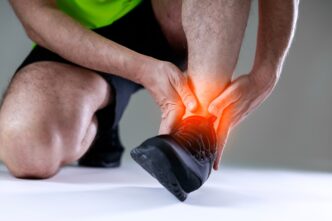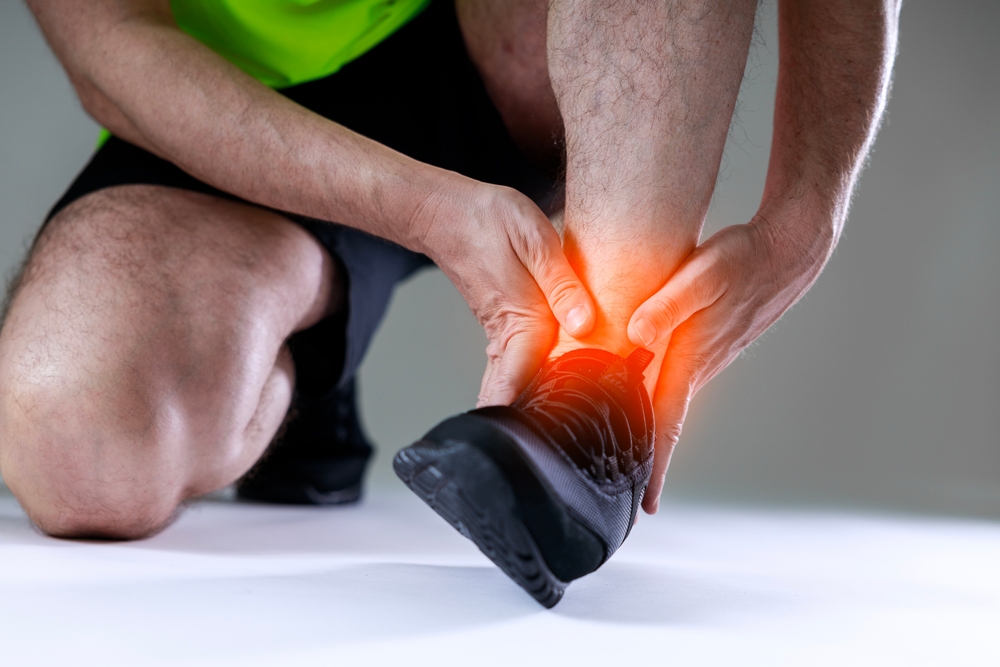WORDS DR AU YONG PUI SAN
Ankle sprain is a very common injury in both the sporting and non-sporting population. It is one third of all sports injuries. Ankle sprain can take a long time to heal and up to 60% of sufferers have long-term disability.
The ankle joint is held in place by ligaments and tendons which maintain its stability. Ligaments are attached from bone to bone while tendons are attached from muscle to bone.
When you sprain your ankle, you will experience pain and swelling over the outer side of the ankle. It may be painful to bear weight on the affected side and bruises may appear. In this situation, it is necessary to apply ice compression to control the pain and swelling. The better the control, the faster the ankle can be assessed properly to determine the injury grading and for early rehabilitation.
“When you sprain your ankle, you will experience pain and swelling over the outer side of the ankle. ”
NOT-SO-FUN FACT: THERE ARE 3 GRADES OF ANKLE SPRAINS
| GRADE I | GRADE II | GRADE III |
| The ligaments have small tears within some of their fibres, but overall everything remains intact and the ankle can still perform its normal function. | The ligament is incompletely torn. Pain and swelling takes longer to go away. | Ouch! The ligament is completely torn. Initial pain and swelling are severe, and there is usually bruising as well. |
RECOVERING FROM ANKLE SPRAINS
- In Grade I sprains, there may be pain and swelling in the ankle that goes away within a week or two. There is usually not much issue with bearing weight. Ice compression and a few days of rest for the ankle allow for normal physical activities to be resumed by the end of the week.
- Grade II sprains will take about 4 to 6 weeks for the ligament to heal due to the partial tear to the ligament. Physical therapy is important to maintain the muscles surrounding the ankle joint, regain the mobility of the ankle and also to re-learn balance.
- If the ankle sprain is of Grade III, it will be very painful to put pressure on the ankle, so crutches or walker boots is recommended to offload the painful ankle. The pain and swelling will take a while to subside and resuming normal physical activities without pain will take about 2 to 3 months. Sometimes, the torn ligament does eventually heal but usually it will be weak and loose causing the loose sensation of the ankle. Physical therapy is important to regain the range of mobility and to maintain and/or rebuild muscle strength not just for the ankle but also for the entire leg and to re-learn balance (proprioception). If the ankle instability persists, surgery may be needed.
WHAT DO WE DO WHEN WE HAVE A SPRAIN?
If you sprain your ankle, immediately do the following:
- Ice and compress the injured area for 15-20 minutes and repeat every 2-3 hours.
- Rest your ankle
- Start putting weight onto the ankle as you normally do ONLY when the pain and discomfort is minimal.
After that, see the nearest doctor to assess and grade your injury so that you can receive appropriate treatment as soon as possible. The treatment aims to return you to your daily activities as soon as you can and most importantly, prevent repeated ankle sprains that may cause further damage to your ankle.
If Grade II or III sprain is detected within the first 2 weeks of the sprain, ultrasound-guided hyaluronic acid can be injected into the space between the torn ligament. This creates a “bridge” between the torn ends of the ligament aiding the formation of new fibres between the ends. Research has shown that this quickens the healing process by 2-4 weeks. With the addition of physical therapy, it is possible to return to normal physical activities to a degree without the need for surgery.
I have seen patients with Grade II and III ankle sprains who only saw a doctor after a few months due to pain and/or instability. By then, they may have had more episodes of ankle sprains due to a combination of weakness and instability. Worst case scenarios include severe cartilage injuries; early osteoarthritic changes to the ankle; pain during physical activities and worsening aches and pains in the lower leg.










